-
 Bitcoin
Bitcoin $92,477.6434
-1.11% -
 Ethereum
Ethereum $1,744.7789
-2.50% -
 Tether USDt
Tether USDt $1.0001
-0.01% -
 XRP
XRP $2.1472
-5.15% -
 BNB
BNB $596.6488
-2.31% -
 Solana
Solana $146.8572
-3.16% -
 USDC
USDC $1.0000
0.01% -
 Dogecoin
Dogecoin $0.1732
-4.62% -
 Cardano
Cardano $0.6866
-1.62% -
 TRON
TRON $0.2440
-0.63% -
 Sui
Sui $2.9943
3.75% -
 Chainlink
Chainlink $14.3901
-2.82% -
 Avalanche
Avalanche $21.9130
-3.32% -
 UNUS SED LEO
UNUS SED LEO $9.2481
1.88% -
 Stellar
Stellar $0.2623
-3.64% -
 Toncoin
Toncoin $3.1179
0.54% -
 Shiba Inu
Shiba Inu $0.0...01304
-4.77% -
 Hedera
Hedera $0.1777
-4.20% -
 Bitcoin Cash
Bitcoin Cash $358.9657
0.45% -
 Polkadot
Polkadot $3.9866
-2.91% -
 Litecoin
Litecoin $81.7041
-2.94% -
 Hyperliquid
Hyperliquid $18.0887
-4.08% -
 Dai
Dai $1.0000
0.00% -
 Bitget Token
Bitget Token $4.4473
-2.98% -
 Ethena USDe
Ethena USDe $0.9994
0.01% -
 Pi
Pi $0.6441
-3.30% -
 Monero
Monero $224.1265
-1.26% -
 Uniswap
Uniswap $5.7309
-3.91% -
 Pepe
Pepe $0.0...08439
-7.42% -
 Aptos
Aptos $5.2356
-1.97%
How does the NFT secondary market deal with technical failures and cyber attacks?
NFT marketplaces use monitoring systems, encryption, and incident response plans to mitigate technical failures and cyber attacks, ensuring platform stability and user trust.
Apr 15, 2025 at 04:00 am
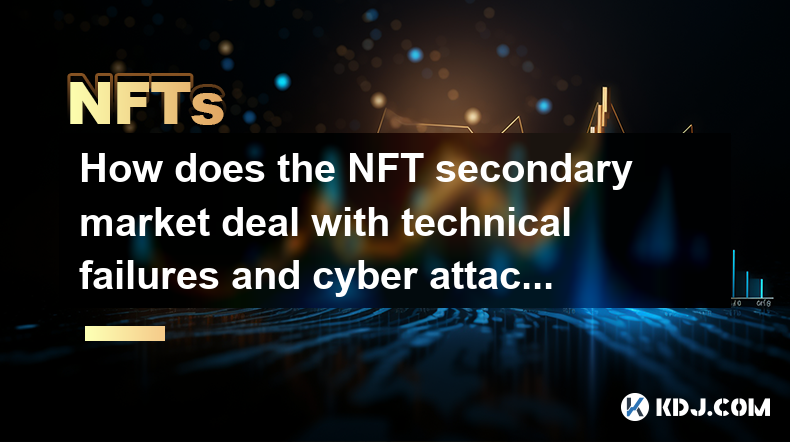
The NFT secondary market, a bustling hub for trading digital assets, is not immune to technical failures and cyber attacks. These incidents can disrupt trading, compromise user data, and erode trust in the platform. Understanding how NFT marketplaces handle these challenges is crucial for both traders and investors. This article delves into the strategies and mechanisms employed by NFT secondary markets to mitigate and respond to technical failures and cyber attacks.
Identifying Technical Failures and Cyber Attacks
Technical failures in the NFT secondary market can range from server downtimes to software bugs that halt trading activities. These issues can stem from high traffic volumes, outdated infrastructure, or coding errors. On the other hand, cyber attacks are deliberate attempts to breach security systems, steal data, or disrupt services. Common types of cyber attacks in the NFT space include phishing, hacking, and ransomware.
NFT marketplaces employ various tools and techniques to identify these issues. Monitoring systems continuously track the performance of servers and applications, alerting administrators to any anomalies. Security information and event management (SIEM) systems aggregate and analyze log data to detect potential security breaches. Additionally, user reports play a crucial role in identifying issues that automated systems might miss.
Preventive Measures Against Technical Failures
To minimize the risk of technical failures, NFT marketplaces implement robust preventive measures. Regular maintenance and updates are essential to keep systems running smoothly. This includes patching software vulnerabilities, upgrading hardware, and optimizing code to handle increased traffic.
Load balancing is another critical strategy. By distributing network traffic across multiple servers, NFT marketplaces can prevent any single point of failure from bringing down the entire system. Redundancy is also employed, where backup systems are ready to take over if the primary system fails.
Furthermore, stress testing is conducted periodically to simulate high-traffic scenarios and identify potential bottlenecks. This proactive approach helps marketplaces prepare for peak trading periods, ensuring that the platform can handle the load without crashing.
Preventive Measures Against Cyber Attacks
Cybersecurity is a top priority for NFT marketplaces, given the high value of the assets traded on these platforms. Encryption is used to secure data both in transit and at rest, making it difficult for attackers to access sensitive information. Multi-factor authentication (MFA) adds an extra layer of security, requiring users to verify their identity through multiple methods before accessing their accounts.
Firewalls and intrusion detection systems (IDS) are deployed to monitor and control incoming and outgoing network traffic, identifying and blocking potential threats. Regular security audits are conducted to assess the effectiveness of existing security measures and identify areas for improvement.
Additionally, user education is crucial in preventing cyber attacks. NFT marketplaces often provide resources and training to help users recognize phishing attempts and other common threats, empowering them to protect their assets.
Responding to Technical Failures
When a technical failure occurs, NFT marketplaces must act swiftly to minimize disruption and restore normal operations. Incident response teams are on standby to diagnose the issue and implement a solution. These teams follow a well-defined incident response plan that outlines the steps to take in various scenarios.
- Identify the problem: The first step is to pinpoint the exact cause of the failure. This may involve reviewing logs, running diagnostics, and gathering information from affected users.
- Contain the issue: Once identified, the team works to isolate the problem to prevent it from spreading and causing further damage.
- Resolve the issue: The team implements a fix, whether it's a software patch, hardware replacement, or a configuration change.
- Communicate with users: Throughout the process, the marketplace keeps users informed about the status of the issue and the steps being taken to resolve it.
- Post-incident review: After the issue is resolved, a thorough review is conducted to understand what went wrong and how similar incidents can be prevented in the future.
Responding to Cyber Attacks
Responding to a cyber attack requires a different set of actions, focused on securing the platform and protecting user data. Immediate containment is critical to prevent the attack from spreading. This may involve isolating affected systems, shutting down compromised accounts, and blocking malicious IP addresses.
- Investigate the breach: A forensic analysis is conducted to understand how the attack occurred and what data may have been compromised. This involves reviewing logs, analyzing network traffic, and possibly engaging third-party cybersecurity experts.
- Notify affected users: If user data has been compromised, the marketplace must notify affected individuals promptly, providing guidance on how to protect themselves.
- Implement security enhancements: Based on the findings of the investigation, the marketplace implements additional security measures to prevent similar attacks in the future. This may include updating software, strengthening encryption, and enhancing monitoring systems.
- Legal and regulatory compliance: Depending on the nature of the attack and the jurisdiction, the marketplace may need to report the incident to regulatory authorities and comply with data breach notification laws.
Case Studies: Real-World Examples
Examining real-world examples can provide valuable insights into how NFT marketplaces handle technical failures and cyber attacks. OpenSea, one of the largest NFT marketplaces, experienced a significant outage in 2021 due to a surge in traffic. The platform's response included rapid deployment of additional servers and transparent communication with users about the issue and its resolution.
In another instance, Rarible faced a phishing attack targeting its users. The marketplace quickly identified the threat, notified users, and implemented enhanced security measures to prevent future attacks. These case studies highlight the importance of preparedness and swift action in managing such incidents.
FAQs
Q: How can users protect themselves from phishing attacks on NFT marketplaces?
A: Users can protect themselves by enabling multi-factor authentication, being cautious of unsolicited emails or messages, and verifying the authenticity of websites before entering any personal information. It's also important to use strong, unique passwords for each account and to keep software and security tools up to date.
Q: What should users do if they experience a technical failure on an NFT marketplace?
A: If users encounter a technical failure, they should first check the marketplace's official communication channels for any updates or announcements. If the issue persists, they can reach out to customer support for assistance. It's also advisable to avoid making any transactions until the issue is resolved.
Q: How do NFT marketplaces ensure the security of user data?
A: NFT marketplaces employ a variety of security measures to protect user data, including encryption, firewalls, intrusion detection systems, and regular security audits. They also implement multi-factor authentication and educate users on best practices for securing their accounts.
Q: Can technical failures or cyber attacks affect the value of NFTs?
A: Yes, technical failures or cyber attacks can impact the value of NFTs by eroding trust in the platform and causing disruptions in trading. However, the extent of the impact depends on the severity of the incident and the effectiveness of the marketplace's response.
Disclaimer:info@kdj.com
The information provided is not trading advice. kdj.com does not assume any responsibility for any investments made based on the information provided in this article. Cryptocurrencies are highly volatile and it is highly recommended that you invest with caution after thorough research!
If you believe that the content used on this website infringes your copyright, please contact us immediately (info@kdj.com) and we will delete it promptly.
- Russia Attacks Bitcoin Mining Operations Again: More Restrictions Coming
- 2025-04-24 17:30:12
- Johor police cripple bitcoin-mining syndicate, causing TNB losses exceeding RM1.28 million
- 2025-04-24 17:30:12
- Solana (SOL) Price Surged by 5% and Hit $150.22
- 2025-04-24 17:25:13
- ING is teaming up with crypto firms to launch a euro-backed stablecoin.
- 2025-04-24 17:25:13
- Bitcoin vs Ethereum in 2025: Two Cryptos, Two Different Jobs
- 2025-04-24 17:20:12
- Pi Network Surprises the Market with a 5% Price Surge as It Launches Migration to Mainnet
- 2025-04-24 17:20:12
Related knowledge

How to display and trade NFTs from NFT airdrops?
Apr 18,2025 at 04:42am
How to Display and Trade NFTs from NFT Airdrops? NFT airdrops have become a popular way for projects to distribute their tokens and engage with their community. If you've received NFTs through an airdrop, you might be wondering how to display and trade them. This article will guide you through the process step-by-step, ensuring you can showcase your NFT...
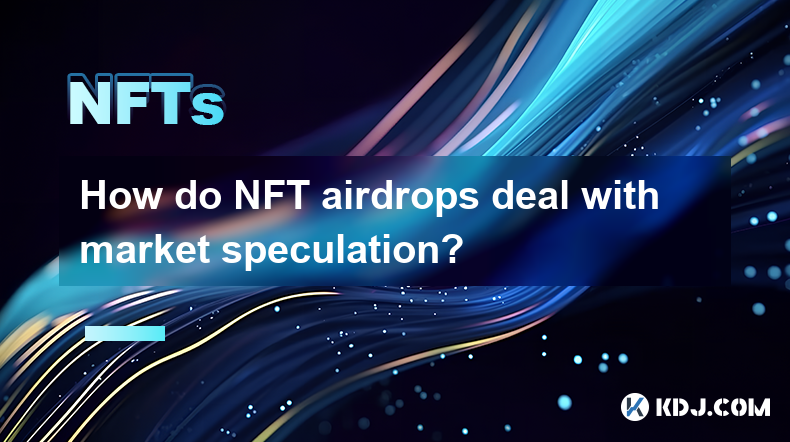
How do NFT airdrops deal with market speculation?
Apr 20,2025 at 10:28pm
NFT airdrops have become a significant phenomenon in the cryptocurrency space, often used as a marketing tool to distribute tokens or digital assets to a wide audience. However, they also introduce elements of market speculation that can impact the value and perception of NFTs. This article explores how NFT airdrops deal with market speculation, delving...
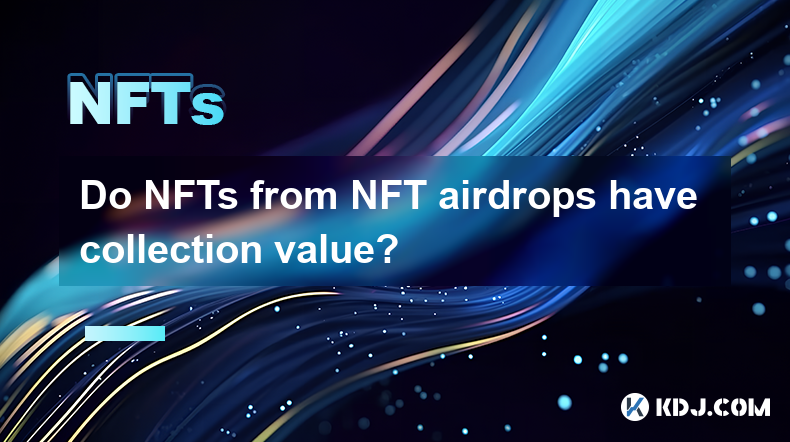
Do NFTs from NFT airdrops have collection value?
Apr 18,2025 at 11:49pm
NFTs, or non-fungible tokens, have become a significant part of the cryptocurrency ecosystem, and NFT airdrops are one way for projects to distribute these digital assets to their community. A common question that arises is whether NFTs received from airdrops have any collection value. To answer this question, we need to delve into various aspects of NF...
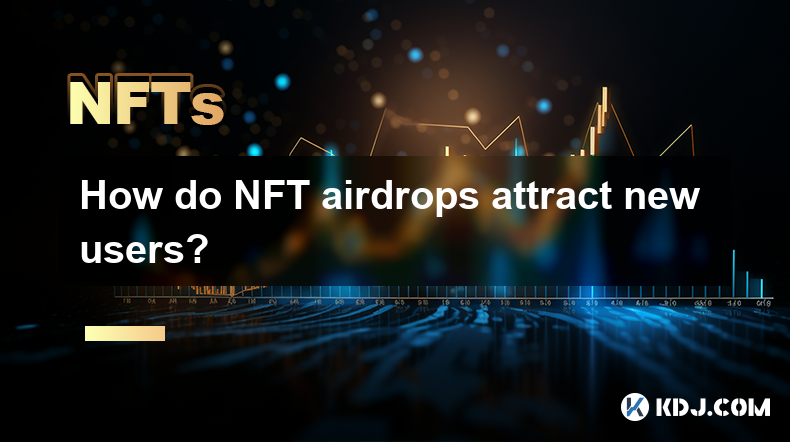
How do NFT airdrops attract new users?
Apr 21,2025 at 07:21am
NFT airdrops have become a popular strategy within the cryptocurrency community to attract new users and engage existing ones. By distributing free NFTs to a targeted audience, projects can create buzz, increase visibility, and foster a sense of community. This method leverages the allure of free digital assets to draw in participants who might not have...
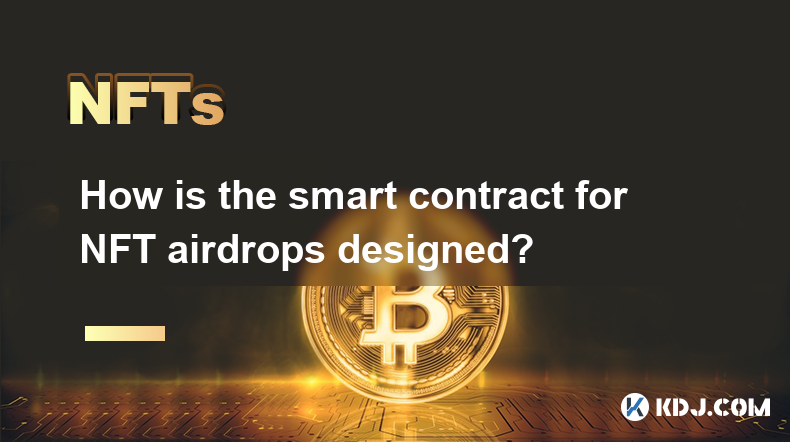
How is the smart contract for NFT airdrops designed?
Apr 18,2025 at 03:10am
The design of a smart contract for NFT airdrops is a complex process that requires careful consideration of various factors to ensure the airdrop is executed smoothly and securely. This article will delve into the intricacies of how such a smart contract is designed, focusing on key components, security measures, and the implementation process. Key Comp...
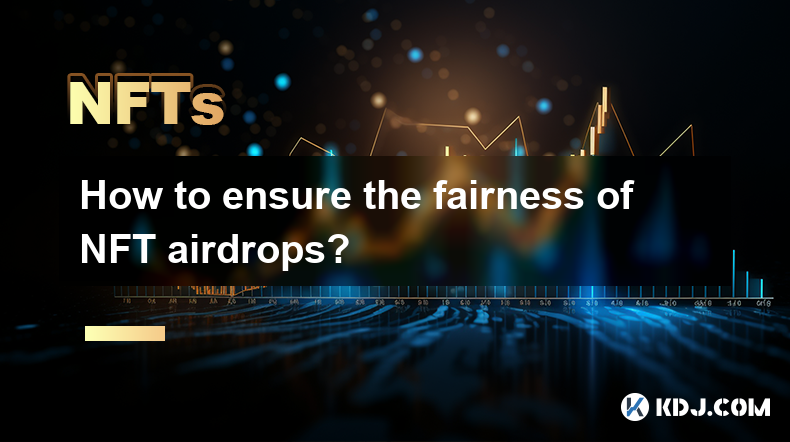
How to ensure the fairness of NFT airdrops?
Apr 24,2025 at 08:49am
Ensuring the fairness of NFT airdrops is crucial for maintaining trust and integrity within the cryptocurrency community. NFT airdrops, where non-fungible tokens are distributed freely to users, can be a powerful marketing tool, but they must be executed fairly to avoid accusations of favoritism or manipulation. This article explores various strategies ...

How to display and trade NFTs from NFT airdrops?
Apr 18,2025 at 04:42am
How to Display and Trade NFTs from NFT Airdrops? NFT airdrops have become a popular way for projects to distribute their tokens and engage with their community. If you've received NFTs through an airdrop, you might be wondering how to display and trade them. This article will guide you through the process step-by-step, ensuring you can showcase your NFT...

How do NFT airdrops deal with market speculation?
Apr 20,2025 at 10:28pm
NFT airdrops have become a significant phenomenon in the cryptocurrency space, often used as a marketing tool to distribute tokens or digital assets to a wide audience. However, they also introduce elements of market speculation that can impact the value and perception of NFTs. This article explores how NFT airdrops deal with market speculation, delving...

Do NFTs from NFT airdrops have collection value?
Apr 18,2025 at 11:49pm
NFTs, or non-fungible tokens, have become a significant part of the cryptocurrency ecosystem, and NFT airdrops are one way for projects to distribute these digital assets to their community. A common question that arises is whether NFTs received from airdrops have any collection value. To answer this question, we need to delve into various aspects of NF...

How do NFT airdrops attract new users?
Apr 21,2025 at 07:21am
NFT airdrops have become a popular strategy within the cryptocurrency community to attract new users and engage existing ones. By distributing free NFTs to a targeted audience, projects can create buzz, increase visibility, and foster a sense of community. This method leverages the allure of free digital assets to draw in participants who might not have...

How is the smart contract for NFT airdrops designed?
Apr 18,2025 at 03:10am
The design of a smart contract for NFT airdrops is a complex process that requires careful consideration of various factors to ensure the airdrop is executed smoothly and securely. This article will delve into the intricacies of how such a smart contract is designed, focusing on key components, security measures, and the implementation process. Key Comp...

How to ensure the fairness of NFT airdrops?
Apr 24,2025 at 08:49am
Ensuring the fairness of NFT airdrops is crucial for maintaining trust and integrity within the cryptocurrency community. NFT airdrops, where non-fungible tokens are distributed freely to users, can be a powerful marketing tool, but they must be executed fairly to avoid accusations of favoritism or manipulation. This article explores various strategies ...
See all articles























































































